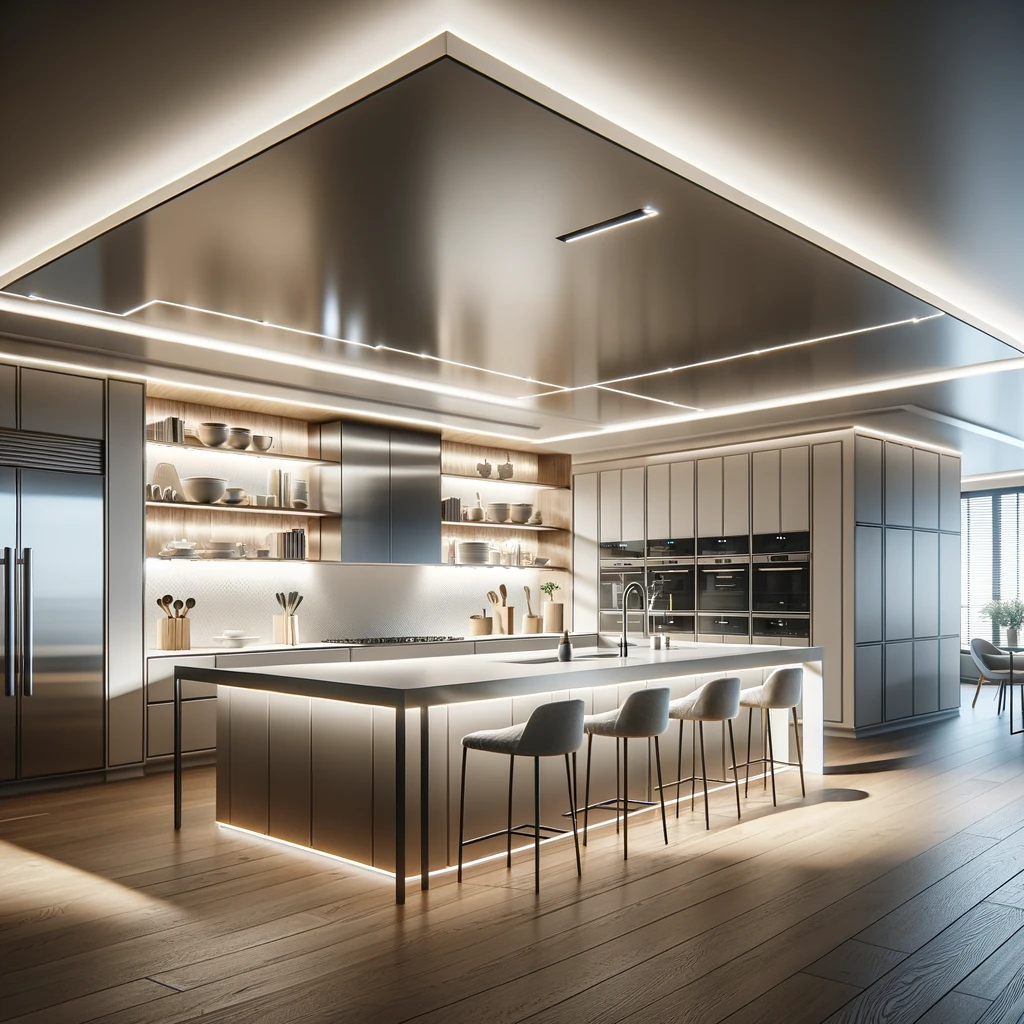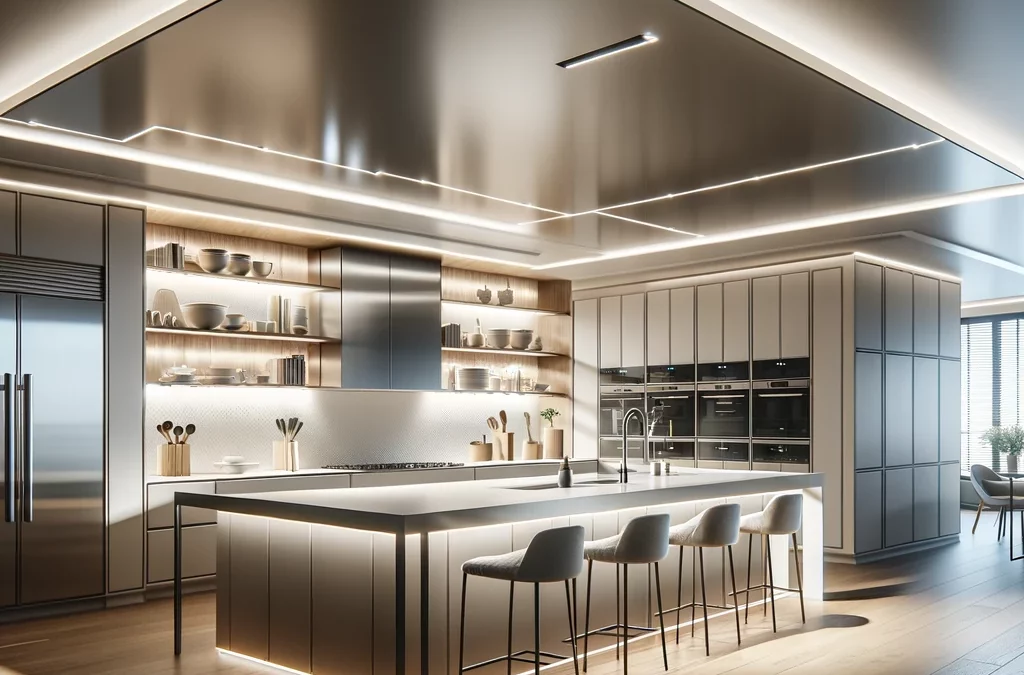Recessed lighting, also called can lights, has become a go-to choice for those seeking a modern lighting solution. Its ability to blend seamlessly with the ceiling, offering a clean, minimalist aesthetic without the intrusion of surface-mounted fixtures, makes it an instant favorite. Our guide delves into everything you should to know about recessed lighting, covering its benefits, types, and some installation tips.
What is Recessed Lighting?
Recessed lighting fixtures are designed to be installed into a ceiling’s hollow opening, sitting flush against the ceiling for a sleek and unobtrusive appearance. These lights are concealed within the ceiling, providing soft, diffused illumination that enhances the ambiance of any space.
Benefits of Recessed Lighting
 Photo credit (https://unsplash.com/@nci) Opting for recessed lighting brings numerous advantages:
Photo credit (https://unsplash.com/@nci) Opting for recessed lighting brings numerous advantages:
- Sleek and Modern Design: Its clean and minimalist look complements modern interior design beautifully.
- Versatility: Suitable for various settings, from kitchens and living rooms to bathrooms and hallways.
- Space Efficiency: By being integrated into the ceiling, it conserves space, making it ideal for rooms with limited area.
- Adjustable Lighting: Select fixtures offer adjustable heads for targeted illumination.
- Energy Efficiency: LED options significantly reduce power consumption.
- Enhanced Property Value: A sought-after feature among homebuyers.
Additionally, recessed lights are available in various sizes, such as 4″, 6″, and even 3″, catering to different design needs.
Types of Recessed Lighting
Understanding the types of recessed lighting available can help you make the best choice for your space:
- Standard Recessed Lighting: The most common form, suitable for new constructions or remodels, attaching directly to ceiling joists.
- Retrofit Recessed Lighting: Designed for easy installation in existing ceilings without major construction.
- Trimless Recessed Lighting: Offers a seamless look by sitting flush with the ceiling without visible trim, ideal for minimalist designs.
- Recessed Deck Lighting: Installed into deck floors or steps, providing ambient outdoor lighting.
- LED Wafer Lights: These slim fixtures don’t require traditional housing and can be installed directly under floor joists (1/2″drywall) with minimal clearance.

Installing Recessed Lighting
Though it may appear daunting, with the right tools and guidelines, installing recessed lighting can be a manageable DIY project:
- Location: The first step in installing recessed lighting is to choose the right location for the fixtures. Consider the layout of the room and the purpose of the lighting. For example, in a kitchen, you may want to install recessed lighting above the countertops and stove for task lighting.
- Materials and Tools: Before you begin the installation process, make sure you have all the necessary materials and tools. This may include recessed lighting fixtures, a drill, a drywall saw, wire strippers, and a voltage tester.
- Cut Holes: Using a drywall saw, cut holes in the ceiling where you want to install the recessed lighting. Make sure to follow the manufacturer’s instructions for the size and spacing of the holes.
- Run Wiring: Next, run the wiring from the power source to the location of the recessed lighting. This may involve drilling holes in the ceiling joists and using wire staples to secure the wiring.
- Install Housing: Otherwise, the housing is the part of the recessed lighting fixture that holds the light source. Install the housing into the hole in the ceiling, making sure it is securely attached to the ceiling joists. (We principally use LED Wafer lights in stead of housings. Even in new construction there is no housing required.)
- Connect Wiring: Securely connect fixture wiring to the power source.
- Install Trim and Bulb: (If using LED, the trim and bulb are all one piece)
Finally, install the trim and bulb into the housing. The trim is the visible part of the fixture that sits flush with the ceiling, while the bulb provides the light source. Make sure to choose the right type of bulb for your recessed lighting fixture.
Tips on choosing the Right Recessed Lighting
Selecting the perfect recessed lighting involves several considerations:
- Size and Spacing: Make sure to choose the right size and spacing for your recessed lighting fixtures. This will depend on the size of the room and the purpose of the lighting.
- Trim Type: There are many different types of trim available for recessed lighting, from basic to decorative. Consider the style of your space when choosing the trim.
- Bulb Type: LED bulbs are the most energy-efficient and long-lasting option for recessed lighting. Make sure to choose the right type of bulb for your fixtures. (Again, using wafer lights or LED trim, there are no bulbs. It is all integrated into one piece)
- Dimmability: Consider choosing dimmable recessed lighting fixtures to have more control over the brightness and ambiance of the room.
- Installation Type: If you are installing recessed lighting into an existing ceiling, make sure to choose retrofit fixtures for easier installation.
Conclusion
Recessed lighting is a versatile and modern lighting option that can enhance the look and functionality of any room. With the right type of recessed lighting and proper installation, you can create a warm and inviting atmosphere in your home or office. Use this guide to help you choose the right recessed lighting for your space and install it with confidence. When in doubt , give us a call and we can direct you or give you a hand in your future lighting projects.

